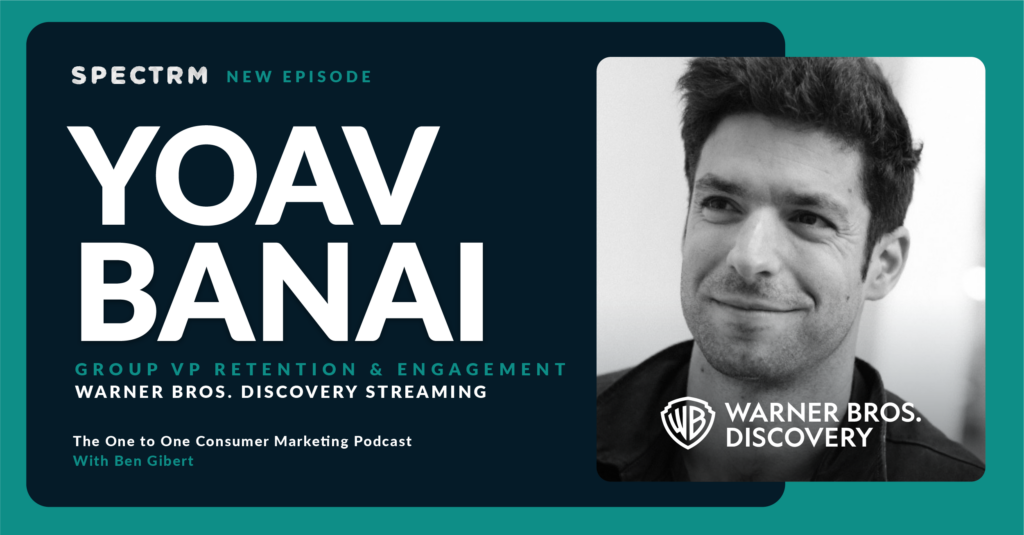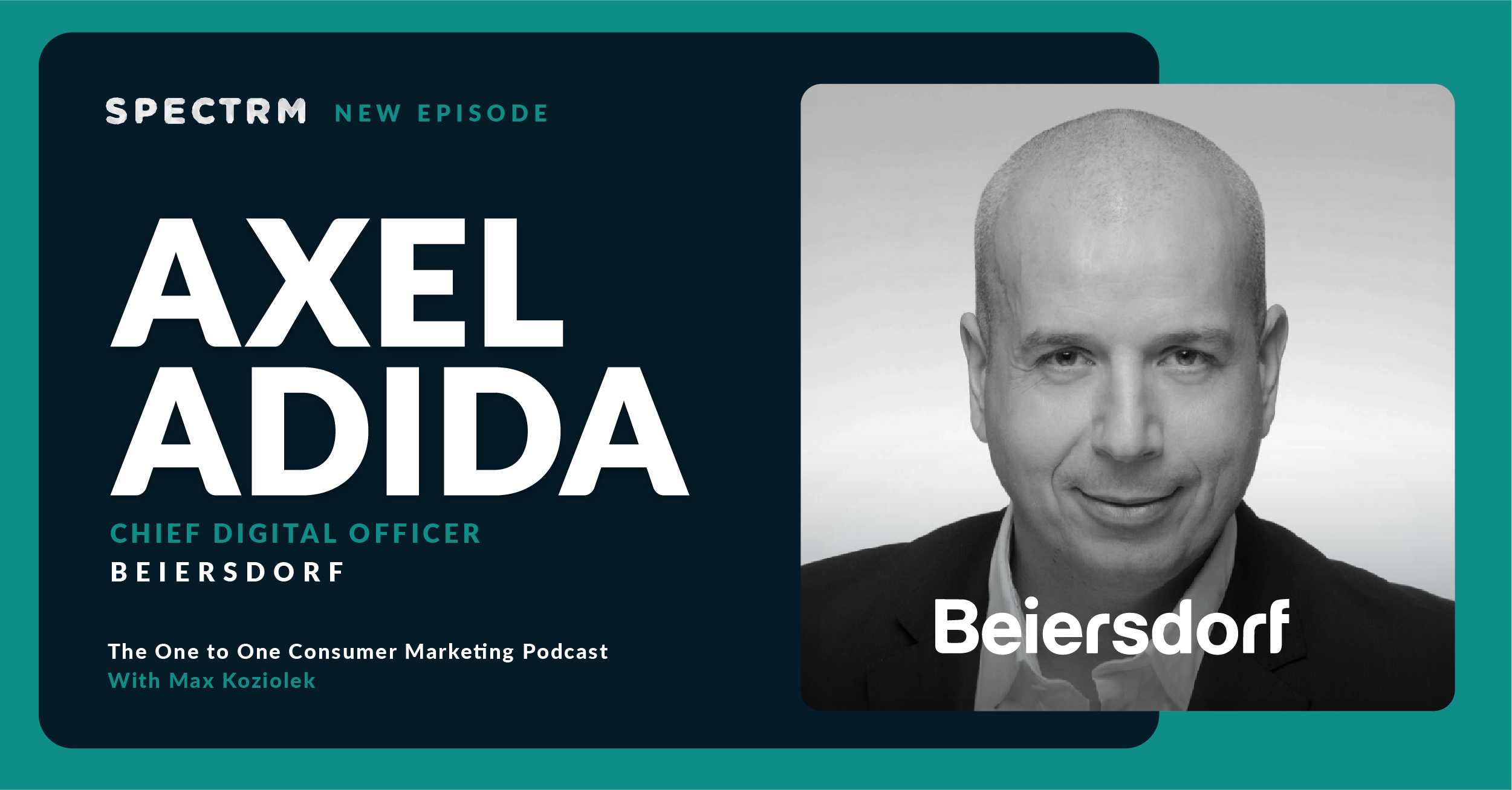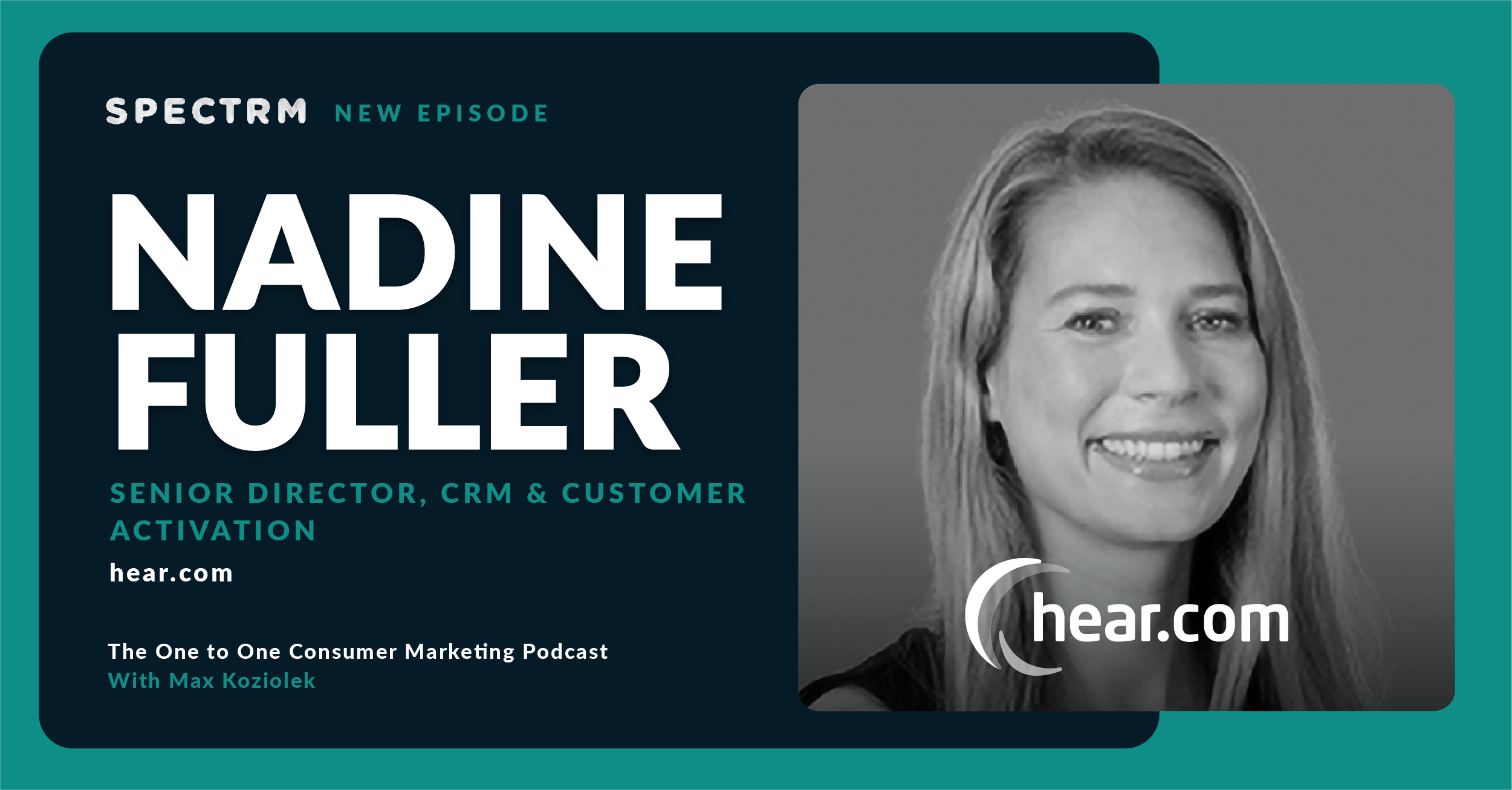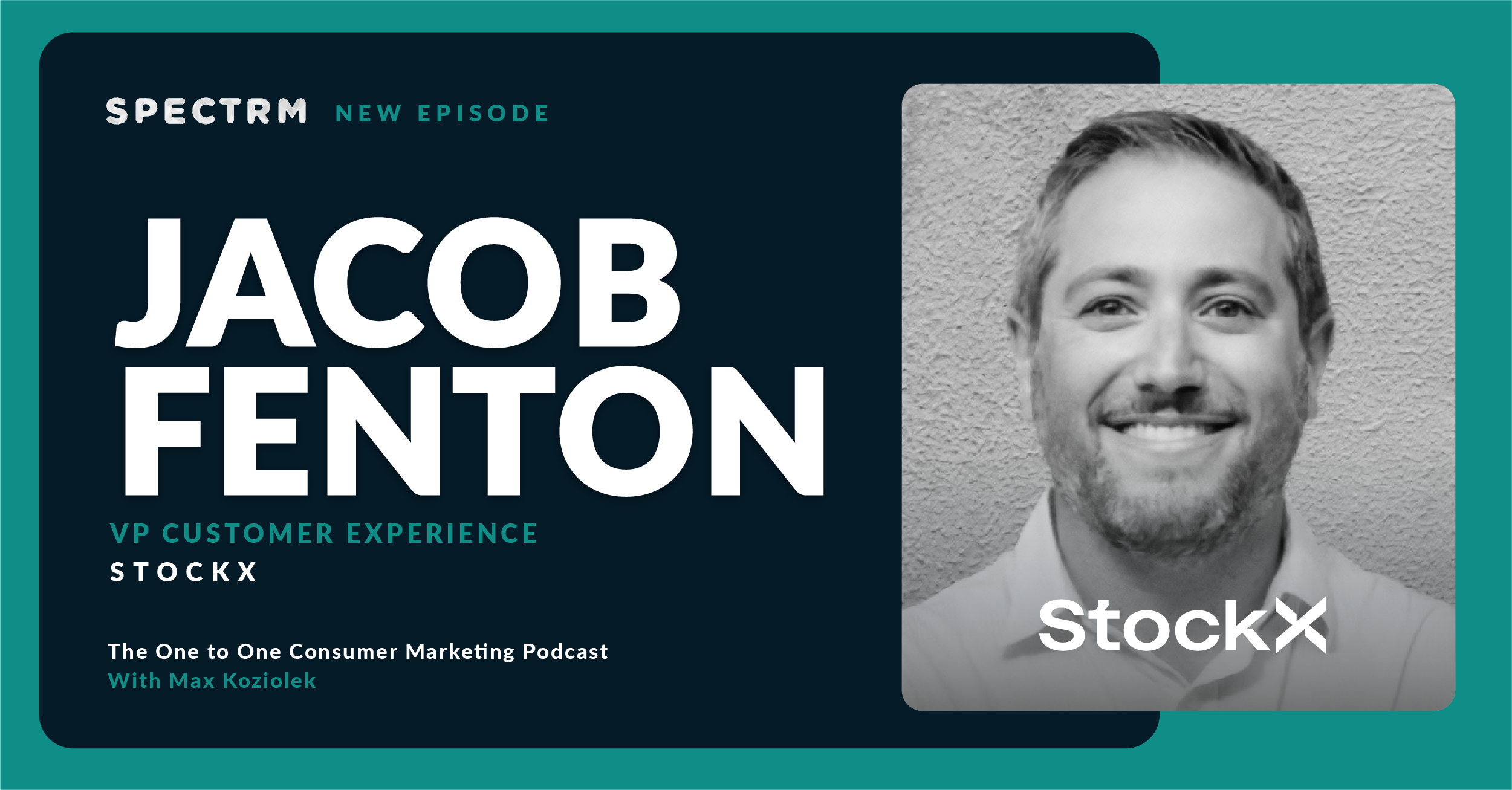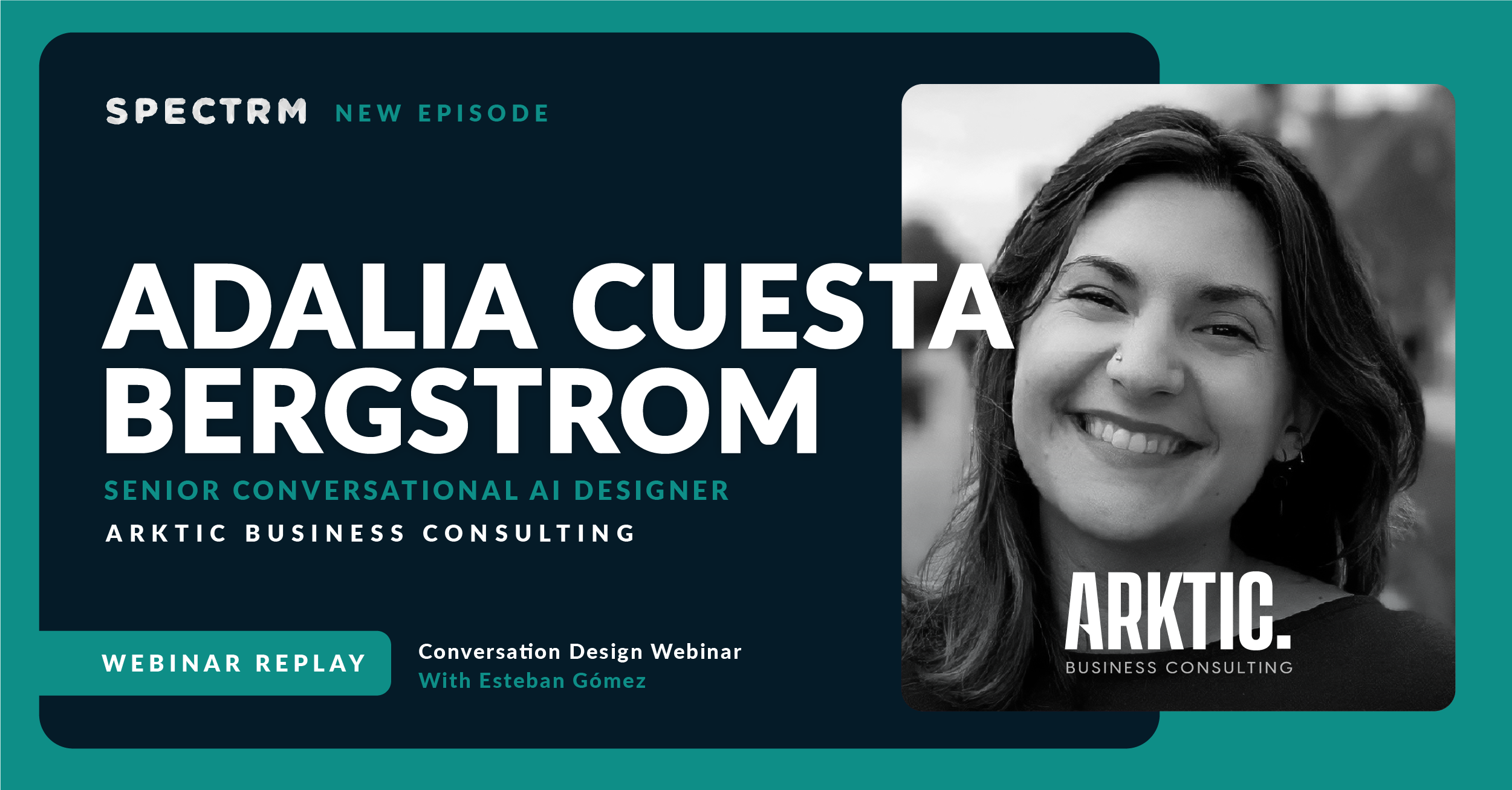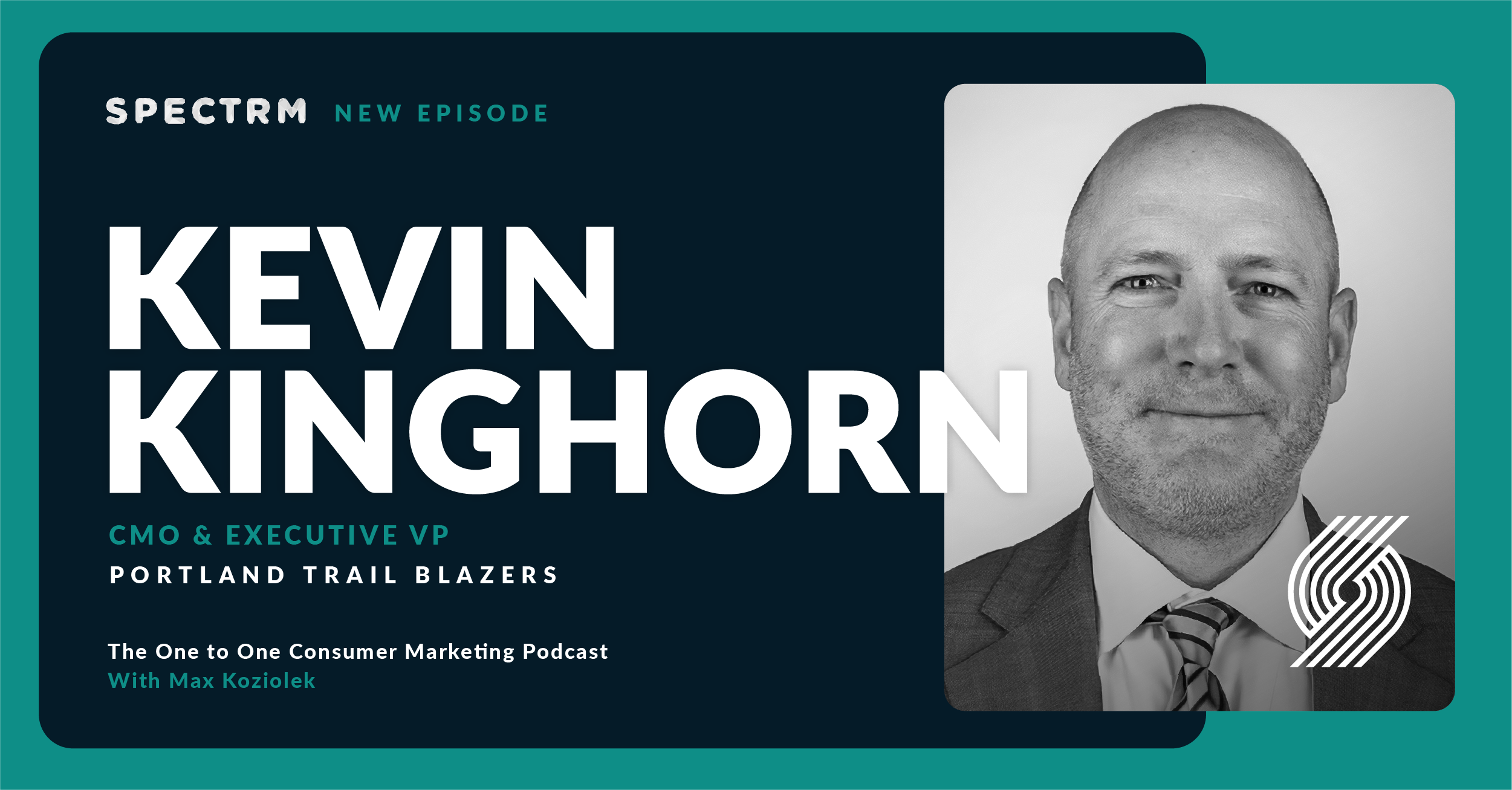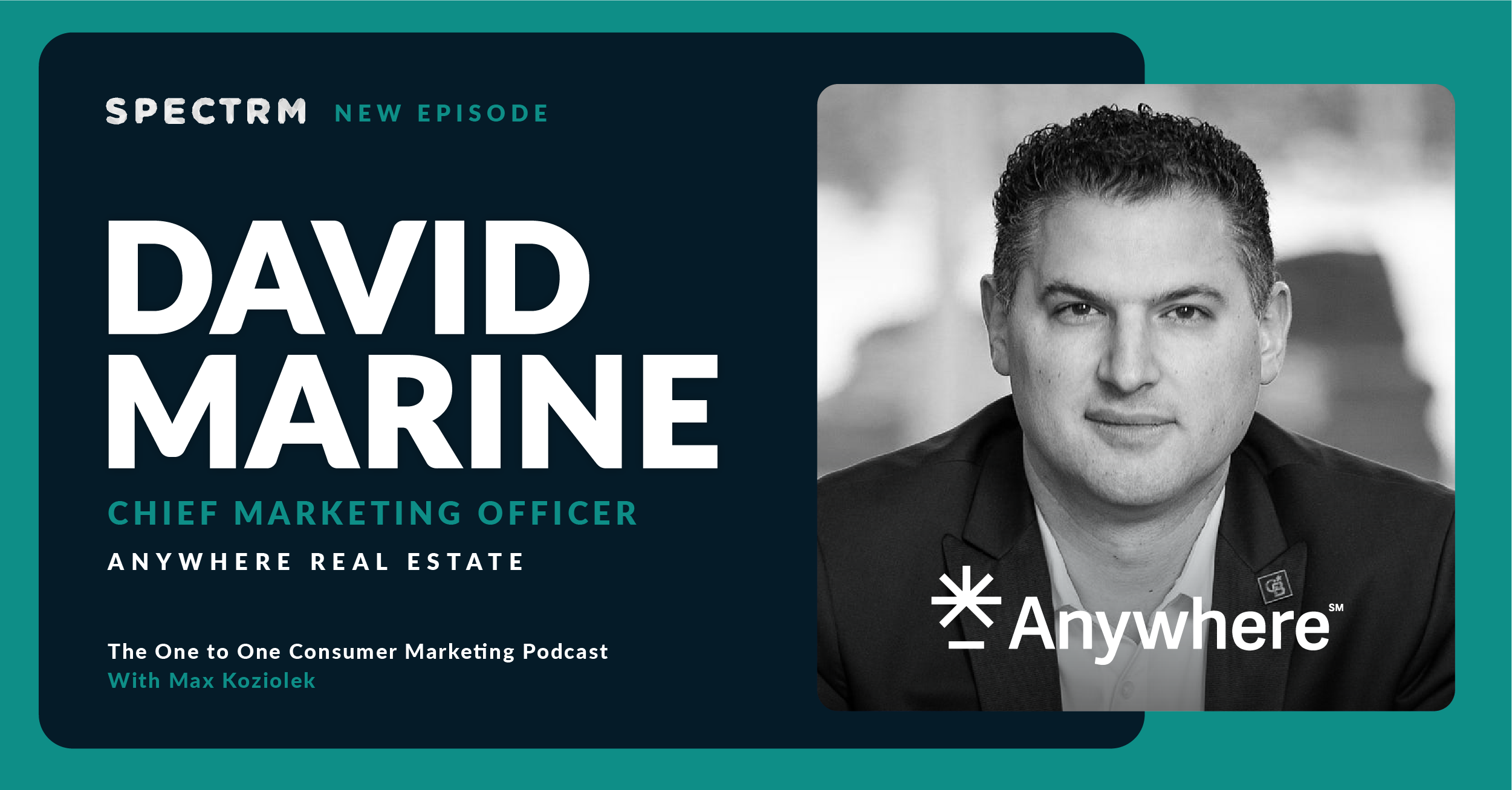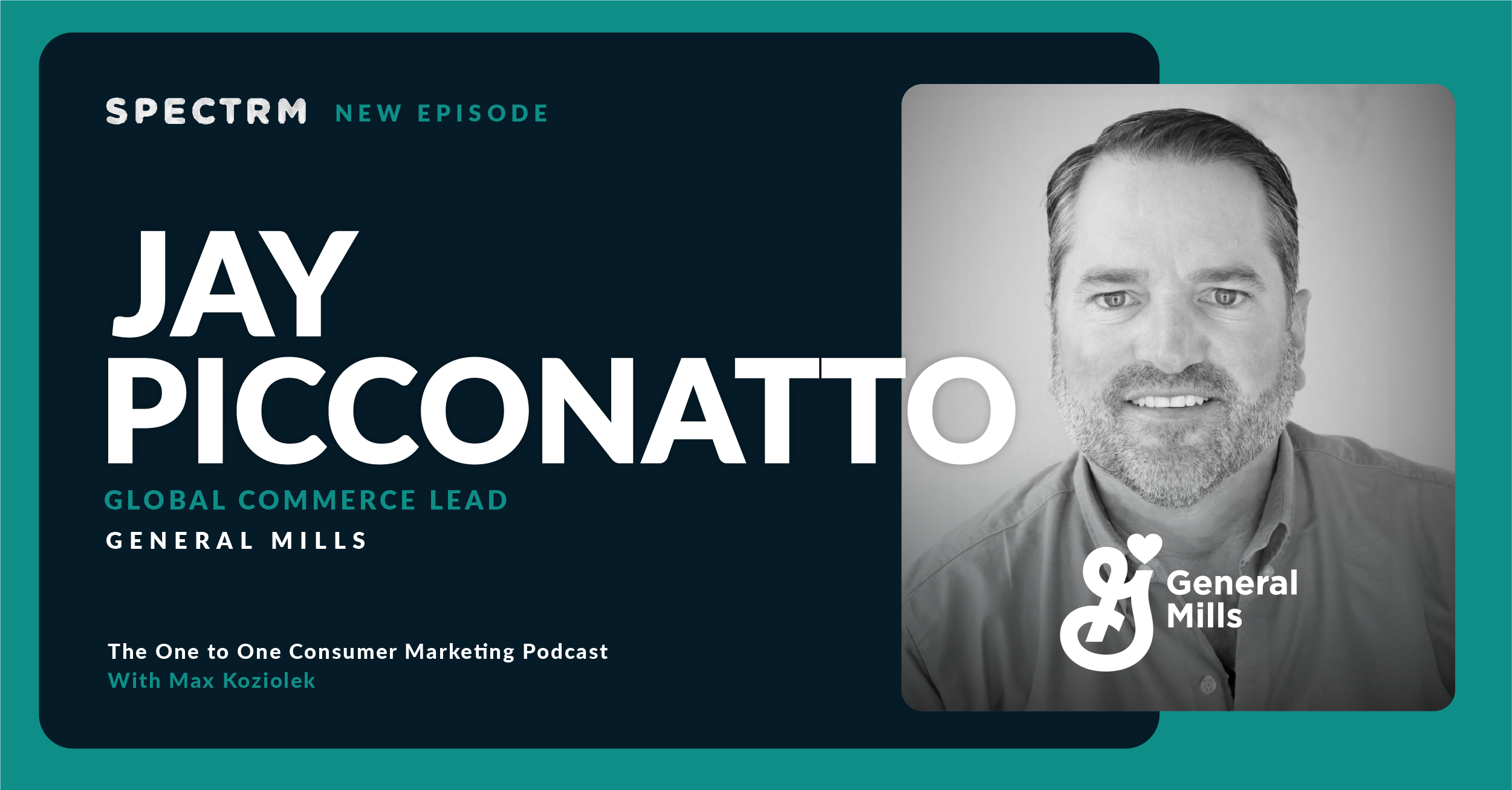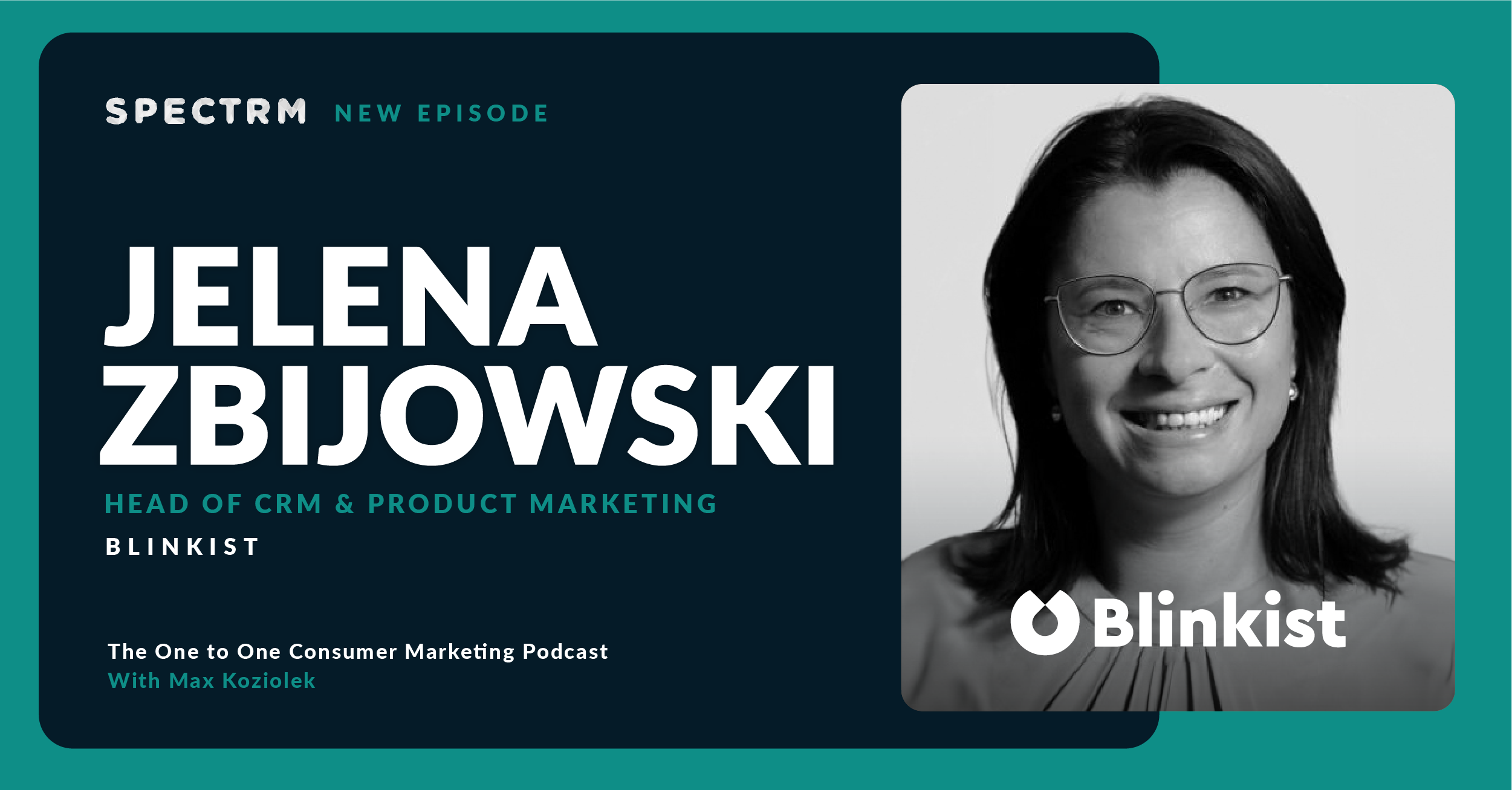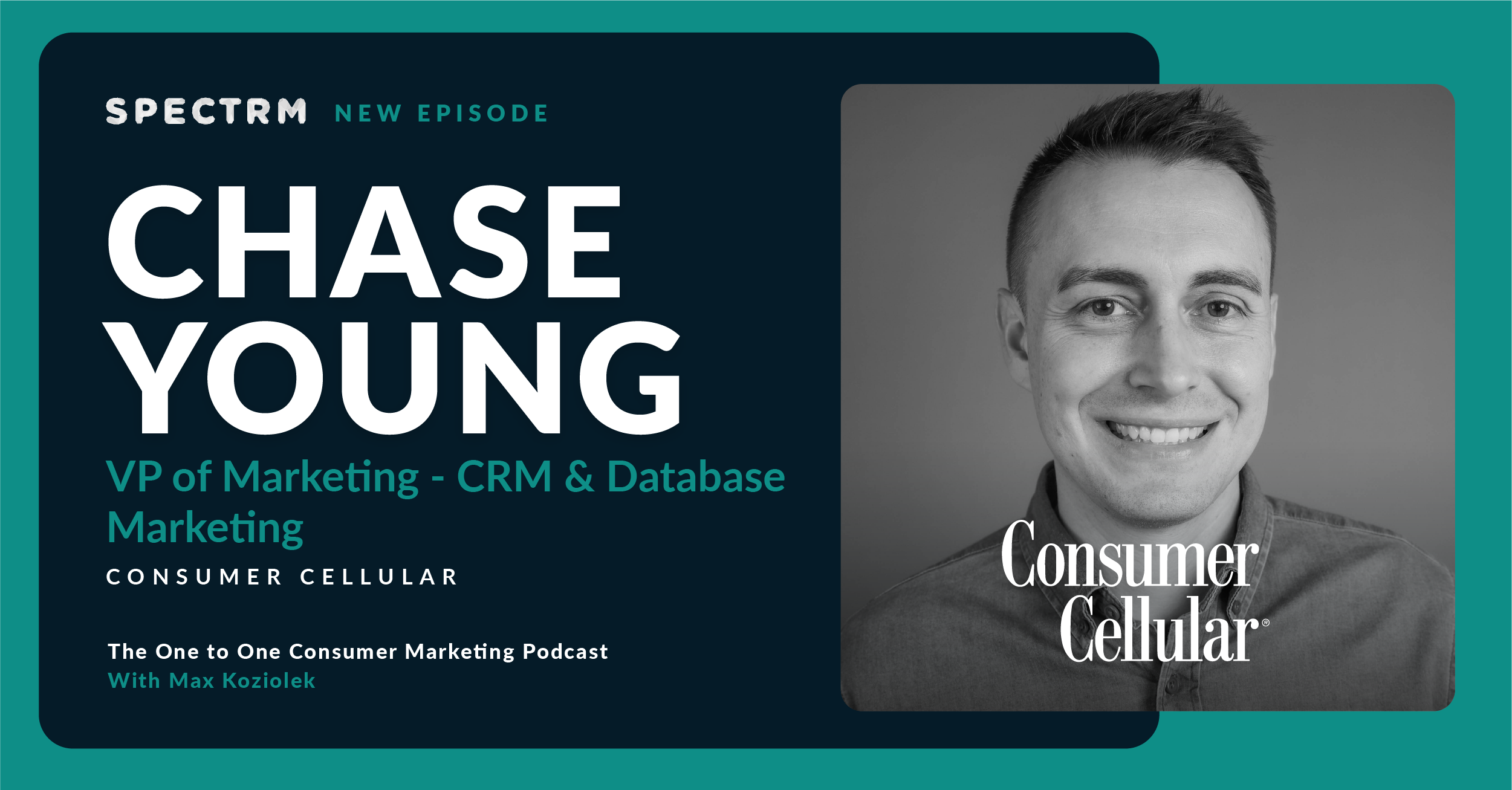Summary
Ben speaks with Yoav Banai, Group VP Retention & Engagement at Warner Bros. Discovery Streaming, a premier global media and entertainment company. They discuss the increasing shift to retention marketing in the industry, and the ways in which they’re building long-term relationships with customers by encouraging health consumption, getting to know them and the content they watch, and offering the right messaging at the right junction. They also discuss how Warner Bros. Discovery is taking a true omnichannel approach to lifecycle marketing, how they measure engagement and activity, and how the future of consumer marketing will become one ongoing interaction with a brand.
Topics discussed
- The path of Yoav’s career, from time in the military, to practicing capital markets law, to focusing on strategy in the streaming music industry, to now leading retention and engagement at Warner Bros. Discovery.
- The current state of consumer marketing, which is seeing a large-scale shift to retention, and how Warner Bros. Discovery is creating a holistic, customer-centric experience across the entire organization.
- How Yoav thinks about retention and lifecycle marketing, and how it’s focused on what the customer needs, finding the right moment to offer recommendations or support, and being ready with messaging at the different junctions of the journey.
- How to listen to customers, find their triggers, influence behaviors at pivotal moments, and get them to take the right action.
- How Warner Bros. Discovery measures retention by looking at customer activity, what type of content they’re watching, and how much of a commitment they’re making to certain content.
- Why Yoav doesn’t have a plan for “the average customer,” and instead looks at how to shift and influence behavior for specific users to build long-term relationships.
- How they’re pursuing a true omnichannel approach for the customer, including focusing more on the message rather than the channel, and how they’re keeping messaging consistent, from emails to error messages.
- Advice for marketers that includes starting from the “why” of what you’re doing, and the importance of measuring what matters.
So there's a more holistic thinking of the whole experience throughout the org. It's not just about bringing those customers in, but also thinking before and after we brought them in, what will make them stay, how we can keep them for longer. Specifically video streaming and a lot of those subscription businesses, we don't sell the product up front one time and that's it. Sell a pair of shoes and move on. It is really about nurturing that relationship with the customers, making them keep using the service, making them develop the healthy habits, develop the emotional connection with the service.
Guest biography
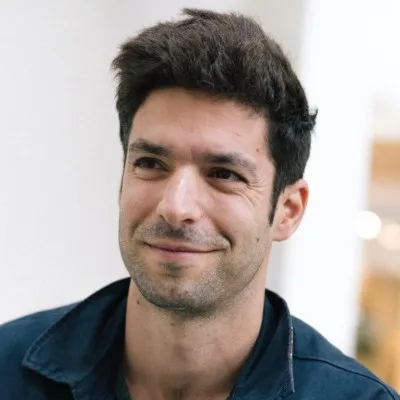
- Yoav is leading the exceptionally talented Retention & Engagement team at Warner Bros. Discovery to create epic streaming experiences on Max and Discovery+. With experience in both video and music streaming and background as a military Special Forces officer, corporate lawyer, and INSEAD MBA, Yoav combines strategic thinking with a design mindset and passion for developing customized solutions to overcome challenges at the intersection of technology and entertainment. Yoav also makes the best home-made hummus in the world.
Company overview
Warner Bros. Discovery, a premier global media and entertainment company, offers audiences the world’s most differentiated and complete portfolio of content, brands and franchises across television, film, streaming and gaming. The new company combines WarnerMedia’s premium entertainment, sports and news assets with Discovery’s leading non-fiction and international entertainment and sports businesses.
Industry: entertainment | www.wbd.com
Subscribe to the podcast newsletter
Transcript
00:00
Yoav Banai
So there’s a more holistic thinking of the whole experience throughout the it’s not just about bringing those customers in, but also thinking before and after we brought them in, what will make them stay, how we can keep them for longer. Specifically in video streaming and a lot of those subscription businesses, we don’t sell the product up front one time and that’s it. Sell a pair of shoes, move on. It is really about nurturing that relationship with the customers, making them keep using the service, making them develop the healthy habits, develop the emotional connection with the service.
00:39
Ben Gibert
Hey, everyone, and thanks for listening to and watching the one to one consumer marketing podcast. Today I’m speaking with Yoav Banai, who is VP of Retention and Engagement at Warner Bros. Discovery Streaming. Yoav, thanks so much for joining the podcast today.
00:53
Yoav Banai
Thank you for inviting me.
00:55
Ben Gibert
Yeah, no, I’m looking forward to it. We connected a while back. It seems like this episode was long in the making. You’ve been very busy over there. Do you want to maybe give the audience a sense of what you’ve been up to?
01:08
Yoav Banai
Yeah, it’s been an interesting and busy period for us. We launched Max, our new streaming service, just a couple of weeks ago and it’s been in the making for probably better part of the last year. And it was really a great effort bringing the Legacy, WarnerMedia and Discovery teams really combining into one proper team and then followed by that one proper streaming service that would give our customers a much better experience than the previous services we had, which are also great.
01:36
Ben Gibert
Yeah, I can attest to being a fan of the old services and I am on the new one as well. So, yeah, looking forward to what’s in store leading up to that big Max launch. You’ve obviously been in the industry for a while. Could you give our audience just a bit of background on you and how you ended up at your current role at Warner Bros. Yeah, sure.
01:56
Yoav Banai
My path was not relatively straight one, I moved a bit. I actually started my career in the military. I spent about a bit less than six years there. Coming out of that. Did a little bit of law, capital markets law didn’t stick with me very long. I moved over to join the music streaming industry, focused on strategy at the beginning, later on business development and eventually settled on customer marketing and lifecycle. Did it for a few years and about two years ago moved over from music to video streaming and joined what was then Water Media. Today’s, Warner Brothers Discovery, leading the retention and engagement teams, focused on making sure our customers are enjoying the service.
02:40
Ben Gibert
Yeah, I love that variety. I feel like marketers often have a zigzagging path to where they ended up. I have to ask because you were in music streaming and you said you were in law before that you joined a streaming service. It was Deezer, right? Was that at the point where did you shift from law because you were seeing what was going on in the copyright and streaming space or was it completely disconnected?
03:03
Yoav Banai
It was pretty disconnected. I did capital markets, know rights of license, all that. I joined Beezer to do strategy, not really focused on law. And it was super interesting times back then in the industry. It is still now in the industry and sort of made my way through the different roles within Deezer into marketing.
03:25
Ben Gibert
And yeah, now that you know you’re settled on customer marketing, you’re working in retention and also lifecycle. You’ve obviously gone through a know this major transformation with Max recently as well. How would you kind of summarize the state of consumer marketing today and does it affect the work that you’re doing right now?
03:43
Yoav Banai
I actually think this is a super interesting time, almost like a renaissance for consumer marketing. For the last maybe 1215 years, marketing, specifically growth marketing, was focused on acquisition. It was all about getting new customers through the door. And really for the last year and even more so for the last six months, everyone’s attention and focus and all the eyes are starting to pivot to the later half of growth marketing, which is retention. So for us who are doing retention for a while, it is nice to be able to sort of onboard the rest of the company, the rest of the industry, our peers, our colleagues into the fascinating world of retention. Behavioral science and expand our toolkit beyond just marketing as we collaborate with other teams across the into, really creating a holistic customer centrixic experience.
04:37
Ben Gibert
Yeah, I couldn’t agree more. That’s really been the focus of the podcast for me as well. I’ve been speaking to retention and CRM marketing leaders like yourself because we’ve really seen that shift that you’re talking about away from growth at all costs and acquisition towards obviously the old adage of doing more with less, but also of really focusing on increasing the lifetime value of your customer. I mean, how has that shift played out for you at Warner Bros. How does that play out at an organization of that size? When you talk about a shift in focus from acquisition to retention, I think.
05:12
Yoav Banai
Other than just the obvious changes in budget allocations and all that, we think about like mindset, the marketing teams, the team that was doing acquisition marketing, they will keep doing acquisition marketing and we’re doing a great job. And the teams that are doing retention marketing, they’ll keep doing what they were doing. The different is how we’re working with the rest of the and when product folk would focus on improving the buy flow experience, they would still do it, but they would spend a lot more of their attention and time also thinking about the onboarding experience and also thinking about the cancellation flow. And it goes just product. It goes to tech team and goes to science team and goes to the entire so there’s a more holistic thinking of the whole experience throughout the it’s not just about bringing those customers in but also thinking before and after we brought them in, what will make them stay, how we can keep them for longer.
06:10
Yoav Banai
Specifically in video streaming and a lot of those subscription businesses, we don’t sell the product up front one time and that’s it. Sell a pair of shoes, move on. It is really about nurturing that relationship with the customers, making them keep using the surface, making them develop the healthy habits, develop the emotional connection with the service. So really thinking about the customer from every pillar from pricing team all the way to the Data science and data engineering team with marketing playing I think an interesting role right now of sort of like the point guard we’re trying to work with everyone and bring them to. I mean we’ve been doing this for a while so that’s great. But really it’s definitely not a marketing world. It’s a world that encompasses the entire company in order to really achieve these things.
06:56
Ben Gibert
Yeah, I love that it sounds like it’s not just something then that it’s about freeing up financial resources in terms of technology but you’re actually getting direct access to all of the resources across the organization in order to really focus on retention in terms of that shift and the focus that the is placing on those areas. How are you thinking about retention and lifecycle marketing today? How are you approaching it? Especially, I think HBO Max now Max is kind of one of the OG really quality content services but there’s obviously a lot of competition in the market and a lot of kind of fragmentation of the streaming services in general. So how do you think about it? How do you build loyalty with a customer and keep them?
07:38
Yoav Banai
I think that’s a great question because of the way it was phrased and honestly the answer is we’re trying not to think about how are we going to market our content or how are we going to market the service and actually shift to think about what does the customer need or want. And when you look at that it is not about how are we going to promote this show to this court so they watch it but rather when is the right moment for each customer because each customer will different that they can use our support, that they need our help on going on that healthy path. And we really moved our attention from a new show is coming up, how do we make sure everyone’s aware about it? Into what are the different stages in a customer lifecycle? What are the right intersections of the way customers use our product and in which of these they need our support and making sure we are ready to pick up on each of these intersections or junctions, whatever the customer needs and then surface to them at that right moment the right message for them to put them on the right path.
08:45
Yoav Banai
And those can be different things. The obvious one being how do we onboard a customer, they just signed up, do we need to help them orient or not? And there also might be stuff like customers about to finish a show, maybe now it’s a good time to recommend something else for them to watch. So of course we’re working with the content, we’re working with the product. But it’s not about marketing the content for the sake of marketing the content, marketing the product for the sake of marketing the product. It’s about educating customers. Some of them might need this, some of them might not. So finding the right ones and educating the right ones about the right parts of the product when they need that and about the content that’s relevant for them when they’re interested in it. So we’re much less of a scheduled marketing campaigns to promote releases as they come through and working much more heavier on mapping out breadcrumb, analysis of our customers behavior, finding those junctions and each customers would hit a different junction at a different time.
09:39
Yoav Banai
Being ready for them with a message at that point, or with a nudge, or with whatever it is to put them on the healthy path. And the healthy path might be using some feature we have in the product, it might be watching specific type of content, but we’re trying not to force those messages at our time, but rather make sure they’re delivered at the customer’s time. And we’re also trying not to force our message, but rather tailor it to the customer. So there was a lot of work done with basically all the teams I mentioned before on helping us having the technical foundation to be able to do this and trigger those right messages at the right time, populate those messages with the right piece of content for that specific user, et cetera.
10:19
Ben Gibert
Yeah, I love that very customer centric approach to take and I think I actually read an article that you worked on, I think for The Drum where it spoke to that idea, right, of focusing on cohorts rather than focusing on campaigns and really looking at what’s going on in the customer journey. So it seems like that’s a thread that you’ve been working on for quite a long time. I’d love to focus in on what you mentioned in terms of the technical foundation and what are those triggers that you use because I think that’s something our audience is always interested like how are people mapping that journey and defining what triggers are important. Can you talk a little bit more about how you’re doing that at Max?
10:56
Yoav Banai
Yeah, sure. I mean there’s no big secret. The big secret is listen to the customer, right, and try to map that out. Look at what behaviors correlate with retention or with chair depending if you’re a positive or a pessimistic person, you can look at the two sides. But sort of what correlate with retention and remembering the churn is sort of a lagging indicator. You don’t churn immediately. Right. Your behavior needs to start changing until you realize you don’t longer did service. So which types of behaviors are happening on a product? Which type of content consumption is happening on a product? And by the way, I’ll maybe try to even generalize it more because sure, there’s listeners who are not music streaming, but this can still be relevant. So how is the user interacting with your product? And where are those pivotal moments where a certain behavior, certain action or lack of action can define their engagement trend?
11:51
Yoav Banai
Moving from there, once you map those out, then it’s making sure that you’re talking to them at that moment, not three days later, right? Not the following Monday, but at that moment with a message that would be relevant for them and for them is interesting because then we’re going home to the whole word of personalization. And how do we make sure we craft the message template? We’re looking at what is the action we need the customer to take and what’s the right type of content to help push them. But we’re trying not to define the content ourself and tap into whatever recommendation algorithms are available to match it to that specific customer, but making sure we’re talking to them at that moment about the specific issue at hand. With a solution and that can be existed. Content that can be product, education that can be many other things that would help them make the right decision or take the right action and that will put them back on the healthy track.
12:50
Yoav Banai
So as we said, if you finish the show, if you don’t have anything to watch that’s in our business, problematic. We don’t want to wait for you to finish the show and talk to you the following Monday. Right? We actually want to talk to you maybe even a few days before you’re about to finish the show. So you start getting things lined up. Right? So when should we talk to you? I mean that’s for each business to test and try. Is that at the moment you finish? Is that when you’re 95% of a show? 85% finished two days ago. I don’t know. Let’s test, let’s see. But finding out that speed spot. When is the intersection actually happening? When the customer in their mind started to think about what to watch next and making sure we’re available for them at that moment if they need our help to recommend something, they might not need our help.
13:37
Yoav Banai
They might already have things lined up. Their watch list is full. They started sampling. Wait, I’ll stay out of it. Let them do their thing. They’re healthy customers and the same goes to a lot of other things this can go into, as we said, customer onboarding, this can go to customers starting to look at how to cancel. Maybe it’s the right moment to sort of understand why they’re trying to cancel and try to be with that, maybe showing what’s coming next month to the service. There might be many other solutions. But the point is you focus on those intersection. You map it out based on correlating that with retention, correlating that with some other health metrics that we look at that we know are meeting indicators for retention, finding out what is the need at that moment and then making sure you’re there to present a solution timely and that is relevant to the specific customer.
14:26
Ben Gibert
Yeah, I love that. And I was going to ask you mentioned obviously churn is a lagging indicator and you must be doing some prediction to understand likelihood to churn or what those leading indicators are. What are the leading indicators for you that you’re measuring?
14:40
Yoav Banai
Well, obviously you look at activity on the product, who is watching, how often they’re watching, what they’re watching, but what they’re watching being less important for us in terms of are they watching The Last of US or are they watching Friends? But rather what type of content they’re watching might be relevant. Because if you’re watching a movie, then that’s a three hour experience that it’s done. If you’re watching Friends, that’s ten seasons of 22 episodes each, give or take. Right. So we have more slack to play with about when is the right time to recommend. So it’s not so much about the specific title you’re watching, but rather what would be the expected behavior you’ll have if you’re watching that title. And that even can go into stuff like you are watching a show that’s currently running, but have you joined that show from the start and watched it episode by episode, week after week or have you joined at the end to binge it?
15:35
Yoav Banai
Right, those two are also very different customer behaviors and experience and those customers need different things from us. One would need okay, during that week since you joined for that show and you watch, they would need support from us to start watching other stuff. The other customer is binging right through it. They don’t really engage with other content throughout that Binge experience. We need to be ready for them at the end with what to watch next and relevant stuff and maybe with some supporting content. Right. It’s supporting podcasts that goes along with the show if it shows that the stars of that specific title also participate in others. So even the same piece of title can require different assistant for the customer depending on how the customer engaged with that. So we’re looking at how they’re watching, when they’re watching and what, but what being more of sort of type rather than title.
16:25
Ben Gibert
Yeah, I love thank you for getting into the specifics because I think also the specifics are the most interesting in certain cases. You’re talking about personalization at scale, right. Really defining not just the content itself, but letting kind of the recommendation algorithm take that piece, but then meeting the customer in the right moment. There’s inherent complexity to what you’re talking about in terms of analyzing all the behavior, understanding what’s the right moment? What is that intersection? What are the challenges that presents for you at Warner Bros. Yeah, I think.
16:57
Yoav Banai
There are a few challenges. If I have to name the biggest one. One is what I kind of alluded before. We’re trying not to plan for the average customer, not even for a cohort where we’re really trying to be for the specific user, like customer be there for them. So things needs to be really relevant. The second one being we, as I said, moved away from doing marketing into like we’re trying to shift behaviors, trying to influence behaviors. And that’s a hard job. People have their own habits. If we’re trying to get them to develop new ones, it’s difficult. It requires understanding the needs of the customer. It requires crafting the messaging, the right way to create that emotional connection. It requires tapping into the customer’s internal triggers and just helping surface the right ones. So it’s a more difficult thing to influence. We’re not trying to create impulse buying.
17:54
Yoav Banai
Right. It’s also difficult, but it’s a split second, one time decision and it’s over. We’re trying to create long term relationship with the customers. We’re trying to create habits that will last for them, which requires influence behaviors. And that is difficult.
18:11
Ben Gibert
Yeah, I love that. I think the focus on long term relationships is one that seems to really differentiate versus that impulse buy. Right. And to some extent, do you see that as being trust is a foundation for that. And so you have to build trust with a user by showing that you understand them. How do you think about relationship building?
18:31
Yoav Banai
Yeah, absolutely. Trust is foundational. Emotional connection is foundational. And when we’re thinking about how we build that long term relationship, it is not about making the customers use the product more. Right. That helps. I’m glad if they do. But if a customer is happy watching their one movie every Saturday night and that’s it and they’re healthy and they show other healthy habits, great. We’ll let them be. We’ve created that connection. So it’s not about just consumption, consumption. What we’re trying to do is create healthy consumption. And that might be different for different customers. So it’s about understanding the customer. It’s about showing the customer we’re understanding them. We’re not here to pressure you into watch things just because we launch them. Right. If you’re not interested. We understand your taste. And once we showcase that our recommendations are relevant. If we’re sending you a message, it is relevant to you right now.
19:28
Yoav Banai
We’re not just sending everyone the same blanket messages every Friday and Monday. It’s talk to you when you need us to talk to you about things that are relevant for you. We’re crafting the message in a friendly way that will sort of be easy to read, easy to understand. And all of that is in terms of we got you stand what you need from us, and we’re here to make sure that you get the experience that will make you enjoy our content.
19:52
Ben Gibert
Yeah, such an important distinction to make. I think that it is not just about more consumption, that is not your goal, but about building that relationship. Because I can imagine compared to something like mobile gaming apps, where it’s just, let’s get these users into the game as frequently as possible. The goal ultimately is they remain a happy subscriber, and so we engage with them on their old terms to that effect. Can you give me ballpark? I mean, you must bucket these people create personas in some way of saying, okay, this is like the Binge watcher. This is the movie once a night on a Saturday type watcher. Do you have a certain number of personas that you use that you find helpful? Or are you really focused on like, let’s ignore this persona type segmentation and let’s focus exclusively on what are all of the different intersections of the different behaviors that we have?
20:41
Yoav Banai
We have personas, but to be honest, we’re using them more for analytical reasons and maybe for evaluating the catalog and stuff like that. When it’s coming to how are we crafting the plan, the strategy for retention, marketing at least we are really trying to be there for the customer. So we’re looking at all the junctions that are possible that we can identify and be ready there for the customer. It’s not that if you’re in a specific persona, you will get a different message per se that is not one accurate there are specific use case that are so distinct. You mentioned like the Binge watcher, but that’s a cohort or persona that only has one end, right? So we need to actually shift you and move you to a different court. So if you joined at the end of a show to Binge it, we have whatever it will take you to watch eight episodes, ten episodes to convince you to watch something else or to get someone in your household at least to enjoy the service and watch something else.
21:43
Yoav Banai
But once you stop Binging, either we failed and you will probably leave, or we succeeded and you’ve moved on to be a different persona. And that’s part of the reason why at that point, we’re kind of shifting away from personas when it comes to our marketing activities and trying to be as one to one as possible. I used to tell the team that for me, personas is the same as average customer. It’s just an average of a subset of your customers. And again, if you’re looking at average you’re not really relevant for anyone. So I’m really trying to make sure that we are ready for whatever the customer needs us for.
22:18
Ben Gibert
Yeah, I love that one to one is the way that we all build relationships in real life. So it’s obviously how products should be building relationships with their customers as well, how brands should be doing that. You’ve talked a lot about the mechanics of this, how you think about the different customers that you’re personalizing to. What are you seeing in terms of channels? Like is this all in app? Are you using other channels? Which ones are working well for you?
22:42
Yoav Banai
So the way I’m looking at channels is they don’t compete against each other. It’s not this channel works better than that channel but they work together. And the way we’re trying to orchestrate it is that we know when the customer needs their help and sort of what we need to tell them to help them go on the right path where they see that message is less important as long as the message is delivered. And so we’re trying to develop an action plan that will deliver the message to the customer first, then we care about when is it delivered. Obviously there are some channels that lend themselves more to specific type of messages than others. If you need more real estate, an email is probably a better way to go than a push. But generally speaking I’m driven by getting the messages message the customer at the right moment.
23:29
Yoav Banai
And so we usually create multichannel campaigns that try to deliver in one channel first and if it’s not possible then we’ll try to deliver it in a different channel. So that different customers might receive similar messages in different channels because of the way they’re consuming, because of their specific preferences and opt in requirements, because of how they interact with the product. Obviously if you’re only using our product on desktop then inapp messages might be less relevant for you. Doesn’t mean we’re not going to send you the message anymore or push it relevant for you. We’re not going to send you the message anymore. We’re just going to use a different channel. Then I think both of these, this is the last question you talk about, okay, what are the channels are we using and are we using one to one or personas? I kind of like going back to think about well, if were a physical video store, how would we have interacted with our customers?
24:27
Yoav Banai
Right? And some of the messages would have been a sticky note on movie with recommendation like staff picks type of thing. And some would be a conversation, we would approach the customer and start talking to them and some would be a reactive conversation. We would let the customer approach us and just answer the question right. And so it’s the same thing we’re doing now. We’re just trying to make sure we’re giving messages the right moment to help the customer select what to watch next or understand how to use product or whatever the message is. And some of these messages might be relevant for everyone. They can be a sticky note on a piece of title. And if a customer finds them, they find them because they happen to walk down that aisle. Then some of the messages we need to proactively approach the customer and start a conversation with them.
25:15
Yoav Banai
And these things can mean different things in the digital world. Some of them would mean we would send an email to a larger group of customers because it really is relevant for anyone who walked down a specific aisle. And we’ve seen their search history on the platform, we’ve seen what they’ve watched. And some we would wait for our customer to do an action that will trigger a reaction from us. But all of these are relevant as long as you look at your store holistically and understand the different way customers interact with your store.
25:44
Ben Gibert
Yeah, I love that. The proactive conversation, rather than kind of the reactive engagement that takes a different, I guess, quality of interaction to some extent, right, versus just sending a message or reacting to behavior in the platform. How are you creating those conversations or how are you having those conversations one to one with customers? Are there particular types of content or platforms where you’re gathering data outside of just what they’ve watched or what they didn’t react to that you sent to them or where you’re trying to understand their preferences more?
26:15
Yoav Banai
We try to understand as many cues as we can take from a customer. I can give a specific example in this reactive versus proactive we mentioned before. Someone is watching a show and they’re about to finish it when they’re closing to the end of the show. It’s probably a good time for us to proactively approach that customer and say, we’ve seen that you’ve been enjoying this show. How about trying that one you think you’d really like? It based on the cast of this show and that show based on the genre, based on the producer, based on people who’ve watched this show, traditionally enjoy that show. There’s many different reasons why we might recommend something for you versus a customer is saving a show to their watch list, but then not coming back to watch it. Maybe that’s when we need to sort of react and tell a customer, just a reminder, you save this for later.
27:00
Yoav Banai
It’s later now, knowing when is the right time to trigger that. So there’s some stuff that we would understand. The customer is about to reach an intersection. They’re about to finish a show, they’re binging something, and they’re about again to finish that show. And then we’re proactively approach and not wait for them to reach that. And by the way, it’s not just about consumption. It. Can be also like technical issues. We’ve noticed that someone had a history of failed payments. Right. An involuntary churn. It’s a big topic. So we can approach the customer proactively and say, hey, maybe updating to a different payment method. We can approach a customer and say, hey, we noticed you’re about to finish the show and some things, we need to take a step back and wait for the customer to come to us. And we see the behavior they’re doing, the actions or the lack of actions they’re taking and react when that happened, based on what we know from that customer, we know how they’re consuming the content, what they saved to the watch list, what their downloads, what they search, what they watched and finished watch.
28:03
Yoav Banai
They watched and abandoned halfway. And that can tell us that they didn’t quite enjoy it. Right. And so, understanding all these things, we are lucky to have a deep enough catalog and a product that works on a vast majority of platforms that we are able to then go back to a customer and help them tailor their experience. Hey, we’ve noticed that you’re watching on mobile here’s. How you Chromecast to enjoy this movie deserves a big screen, right? Here’s how you like educating about that specific feature. Or we’ve noticed that the last X amount of titles you watch are all from the same director. Like, here is his full library that you might enjoy. Right. So depending on how you interact with the product, what type of content you’re enjoying, how are you paying us? Right. That can also trigger a bunch of paths that are relevant for the customer and for us to be able to maintain a long term relationship.
28:58
Yoav Banai
Right. If you can’t pay us, it’s a problem. So understanding these different interaction, how the customer has been consuming it, if the customer is new, we might look at customers with similar histories. They came from the same acquisition channels. They consume product on the same platforms. They’ve watched the first title that you watched in the first week. Right. We can look at similar customers that usually will be done for early tenure customers that we don’t know much about. But as we get to know you better, we try to tailor it to you.
29:32
Ben Gibert
Yeah, I love that. And thank you again for going into the details, because I think that’s what’s really interesting to our audience is understanding how brands, how marketers, are crafting these journeys. And every business is obviously unique, and it’s a marketer’s job to figure out how to engage the customers within that unique context. But at the end of the day, there’s so much that we can learn from other industries and from how other brands are doing it. So I really appreciate the detail, maybe stepping out of what’s going on at Warner Bros. Specifically right now. What is something in marketing today that you’re excited about that you wake up in the morning. And you think this is something that there’s a lot going on here.
30:12
Yoav Banai
I mean, there’s a lot going on in new hardware coming to life and new software coming to life and everything from Dr and AR and all that. But I think for me, what I’m excited about is what we mentioned at the beginning is the fact that we’re finally getting that much attention for attention marketing that I think would allow brands all over the world to pivot to be more consumer centric people, to think more about their long term relationship with a customer rather than that specific transaction at hand. But lately we’ve been going more and more or what occupies me now in terms of technology is going more and more deeper into true Omnichannel and thinking about Omnichannel, not just in the sense of what marketing channels do we have email push, inapp, Facebook Messenger, et cetera, WhatsApp? But rather Omnichannel from a customer perspective, what are all the places that customer sees messages from us.
31:14
Yoav Banai
And those messages might be on the product itself, right? It might be the copy we’re using on the product. It might be error messages. It might be messages they’re getting from our partners in our purchase providers partners and WhatsApp and how do we tie all of these? It might be midstream promotions and pre rolls. And there’s many different well, for lack of better world channels that a customer is receiving messages from, not all of them are pure marketing channels. And if we traditionally thought about, okay, omnichannel marketing is pushing up email, that is from our perspective. But I’m trying to think from a customer perspective again. Well, no, that’s not just it. Most of the customers who maybe not be in the industry working on a very similar product would not know the difference between an inapp message and a preroll. If one of them is an ad and one of them is a message from us, if they look the same, they would all be categorized for the customer in their head as an ad, even if it’s our messages, right?
32:12
Yoav Banai
So how do we make sure that it’s very clear, a what the message is, and B, that it’s a conversation and we can’t look at each one of those messages separately. An error message that pops up when a customer has reached a dead end in the experience should have the same tone of voice, same look of feel. It should not say error. It should say, hey, we’ve noticed that you try and do this action. How about we’ll help you get there by clicking here, right? I’m not a copywriter, so forgive me for that. But how to bring all of these together, inapp, email push, and all the rest of the touch points that a customer sees, they all should be part of the same conversation.
32:50
Ben Gibert
Yeah, I love that. Also, that shifts in mindset from business brand focused, reaching the customer, like trying to get in front of them for a specific thing to a specific goal and going back and thinking, no, what is that experience across everything? Because ultimately, that’s what builds trust. That’s what builds the relationships. That’s what makes them choose you. So I think that’s a very productive way to think about it. You’ve obviously learned plenty across your career so far. What are kind of the top three pieces of advice you would give other marketers?
33:20
Yoav Banai
Wear sunscreen.
33:22
Ben Gibert
Fantastic advice.
33:25
Yoav Banai
That’s always good. I would say we’ll start from why don’t do stuff, because that’s what we’ve been doing for years. Understand why you’re doing it. Why is it important for the customer? Why is it important for the company? And where do those two meet? Don’t just do things because of inheritance and then tradition and whatever. And I think a big one that helps with the why as well is make sure you’re measuring what really matters for you. And especially in today’s world, there’s so much data, we can measure so many things, we can track so many data points. And honestly, we can look at the numbers that would make us feel good with what we’re doing. Right. We can choose what numbers we’re looking at, but make sure you’re looking at the numbers that matter for the business and that you almost only look at those.
34:15
Yoav Banai
The rest might be noise, they might be distractions. So honestly, for us, marketeers an email open rate, even an email click through rate. I don’t really know how that is, if it’s correlated with the success of the business. What I want to know, if I send a recommendation via email, is if someone streamed the content I recommended. So make sure you measure and you track the KPIs that truly would measure successfully. All the rest at some level, yeah, track them. Track them. It’s not bad to have the data, but make sure you’re not distracted by that. Make sure you don’t let that noise drown you into going over and over about how to optimize open rates for emails. And then essentially Apple comes one day and changes the whole way we look at open rates. Or people are opening your emails to unsubscribe for emails, or there might be a lot of different things that would make this KPA not relevant at all.
35:09
Yoav Banai
But whether or not people took the end action that we want them today, people embarked on this healthy path that we try to nudge them on. That’s what matters. So track that.
35:19
Ben Gibert
Yeah, absolutely. I know plenty of marketers that completely disregard open rates as an example now, but I think three great priests of advice wear sunscreen. That’s probably one that everyone, even beyond marketers, should be adhering to start from. The why a very powerful principle I think we should all adopt pretty much across anything in life, really, but it’s a very good marketing principle.
35:41
Yoav Banai
Yeah.
35:41
Ben Gibert
And measure what matters is true. There is a lot of distraction out there. So that is going to be the key to success in the long run. Looking forward five years from now, what do you think the future of consumer marketing looks like?
35:53
Yoav Banai
It will be hard for me to answer that question if you’ll ask in about five months from now. Yeah, five years from now is very challenging. What I would say, what I see now, the future going to is taking what I said before about the customer not caring or not differentiating between the different channels. For them, it’s one interaction with a company or a brand or a service. And whether a message is delivered via A or B, I think that would expand further beyond an individual service into your entire interaction with that ecosystem of products or different products from the same brand, or different services from the same brand. And the expectation from the customer, and also the way brands will start reacting would be to continue the conversation, not to start it from scratch with every new product line, with every new service. And so how do we zoom out even more?
36:54
Yoav Banai
We used to look at a message, then we used to look at a channel. Now we’re looking at a product. Now it’s going to be looking at umbrella products and shifting from a product world into a customer world, which means, okay, we’re looking at a customer interaction with all of our products or services and across all of the lifecycles of that customers because they might come in and out of different services at different time. And how do we make sure we keep that conversation? I think that’s where we’re going for now. If that’s five years or five days, it’s hard to say. We’ll make our way there. But I think with the focus now on retention, it will mean that there will be a lot of developments done, both on data engineering and technical infrastructure and capabilities that would allow us to tailor the conversation with the customer further and further.
37:42
Ben Gibert
Yeah, I love that. It’s just like human relationships, right? We remember the context of all of our conversations, of all of the different ways in which we’ve interacted with the people we have relationships with. And I think the best brands out there in the future are going to be doing the same across all of those products. So I think that’s a great call out, Yoav. That’s all we have time for today. But I really love this conversation. If people want to hear more about you or follow what you’re doing, where should they go?
38:08
Yoav Banai
LinkedIn can find me there. And yeah, reach out. So trying to be reactive as I can, you heard him.
38:19
Ben Gibert
That’s Yoav Banai on LinkedIn. So reach out if you have any feedback from the episode. And also to me, I always love hearing feedback from this episode or any others. So go ahead and DM me on LinkedIn or check out Spectrm at spectrm.io to learn more about what we’re doing in the messaging space. Or go to Spectrm on LinkedIn. Yoav, thanks so much for joining today.
38:41
Yoav Banai
Thanks for having me. Have a good day.
38:43
Ben Gibert
You too.
